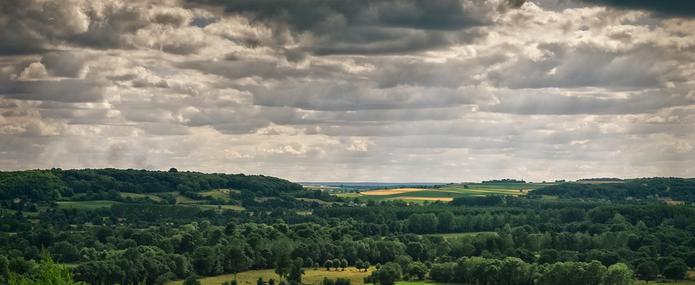The Paris Climate Agreement, adopted in December 2015, invites the countries to achieve carbon neutrality as quickly as possible in the second half of the 21st century[1]. The agricultural sector – and, more broadly, the “land use” sector – has a key role to play in this respect, even though it is also one of the sectors most exposed to the changes already underway. The challenge is threefold: it must reduce its own emissions (livestock, fertilisers); develop carbon sinks (in soils and plant cover) in order to offset its own residual emissions and those of other sectors; and produce biomass for energy and industry, to progressively replace fossil carbon with renewable carbon. To what extent is this possible for European agriculture? How? And with what impacts on biodiversity and food security?
The need to radically transform the European agricultural sector in order to address climate change is gaining acceptance, including among the main actors in the sector. There is relative consensus about the dual necessity of ensuring diets evolve towards a lower consumption of calories and animal products, and reducing losses and waste within the food system. However, changes in production patterns, making it possible to reduce the sector’s emissions, to sequester more carbon and to propose solutions for fossil fuel substitution, are much debated, as are the paths to achieving this. These debates are linked in particular to different ways of prioritising the challenges of food security, climate and biodiversity.
An approach focusing on climate and food security stresses the importance of agricultural sector efficiency in its use of resources. This approach is illustrated by the scenarios proposed recently by the European Climate Foundation (ECF) for a carbon neutral Europe (to which IDDRI contributed). The goal is to maximise agricultural productivity per hectare in order to free up land from agrifood uses and to then use it to either store carbon (especially through reforestation) or to produce biomass for energy or industry. This is known as land sparing. From this perspective, the increase in productivity largely depends on improvements in the efficiency of agricultural practices; it continues to rely on synthetic inputs, doing “better with less”– enabling a total theoretical reduction in direct GHG emissions from the sector of more than 60%. Land use for carbon sequestration or energy production also results in radical land use changes, with major impacts on biodiversity. Thus, in all of the scenarios developed by ECF (mentioned above), the loss of permanent grasslands is at least 50% and may even be as high as 90% of their current surface area (falling from 68 million ha to fewer than 5 million). Yet these grasslands serve as a matrix for European biodiversity today – more than a quarter of all species protected at the European level are associated with these areas – and play a major landscape role.
In contrast, an approach focusing more directly on biodiversity and human health issues, over and above food security alone, seeks first to free itself as far as possible from synthetic inputs – especially pesticides – and, second, to maintain biodiversity rich areas within agricultural areas, in particular grasslands. The TYFA scenario (Ten Years for Agroecology), developed recently by IDDRI, illustrates this approach. In this scenario, the surface area of permanent grasslands remains the same as it is today, and the use of pesticides and synthetic inputs is reduced to zero. This results in lower carbon sequestration capacities (fewer wooded areas) and a smaller amount of biomass available to replace fossil carbon. In such a context, achieving carbon neutrality becomes more difficult. At best, the TYFA scenario thus enables a 36% reduction in agricultural sector greenhouse gas emissions between 2010 and 2050. On the other hand, it leads to the massive recovery of biodiversity in all agro-ecosystem compartments, from soils to landscapes.
In a context in which the respective impacts of climate change and biodiversity loss on human societies cannot be easily compared (is there even any point comparing them?), it appears necessary to clearly establish the terms of the debate on the future of European agriculture (and, in any case, to do so ahead of the CAP 2020-2027). It is important to first rapidly identify the “no regrets” options, enabling the definition of a credible mitigation pathway that is the least detrimental to biodiversity, and second, to make a structured assessment of the challenges relating to one or other of the pathways outlined above in order to collectively set and define the priorities.
This is the debate that IDDRI will open on Thursday 15 November with Ben Allen from the Institute for European Environmental Policy (IEEP) as part of a session of the monthly SDDEE seminar.


